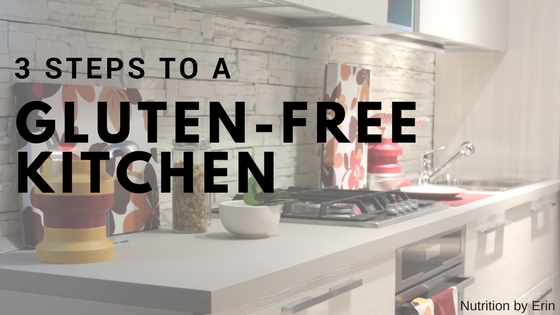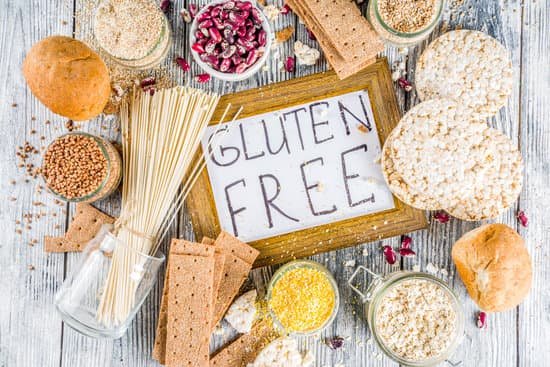If you’ve been diagnosed with gluten intolerance or celiac disease, one of the first things you’ll need to do is learn how to make your kitchen gluten free. Also you maybe interested in Best Camping Cooking Equipment so you can checkout as well. This may seem daunting at first, but with a little planning and organization, it can be easy to create a gluten free kitchen that fits your needs. Here are some tips on how to get started.
Contents
Do you or someone you know have gluten intolerance or celiac disease?
Learning how to make your kitchen gluten-free could be tricky, but if you are determined enough to make it, you can easily make a gluten free kitchen that simply produces what you need. Below we have some handy tips to enhance your knowledge about gluten free items when you are not allowed to eat gluten.
A gluten-free kitchen doesn’t have to be boring – in fact, there are plenty of delicious recipes (gluten-free bread) out there that will fit your dietary needs. With a little creativity and experimentation, you can create meals that everyone in the family will love.
Popular ways to Keep Kitchen Gluten Free
There are many ways that you can make your kitchen gluten free.

1 – Use Gluten-Free Flour:
One of the easiest ways to make your kitchen gluten-free is to use gluten-free flour instead of regular flour. There are many different types of gluten-free flour available, so you can find one that fits your needs.
2 – Use a Dedicated Gluten-Free Oven:
If you have a dedicated gluten-free oven, you can use that to cook all of your gluten-free meals. This is a great option if you have a lot of gluten-free recipes, or if you don’t want to worry about cross-contamination. All condiments should be thrown away, whether gluten-free or not, due to a high chance of cross-contamination. Anything that could potentially be cross-contaminated with gluten should be kept in a separate place in the fridge and or kitchen, and labeled accordingly to avoid any confusion.
3 – Use Separate Utensils:
Another way to keep your kitchen gluten-free is to use separate utensils for cooking and baking. This way, you can avoid any cross-contamination.
4 – Label Your Containers:
If you’re using multiple types of flour or seasonings, it can be helpful to label your containers with gluten-free versions. This will help you stay organized in the kitchen.
5 – Have a Gluten-Free Pantry:
A gluten-free pantry is a great way to make sure that you always have the ingredients you need for gluten-free cooking. Make sure to stock up on things like gluten-free pasta, rice, bread, and cereal. With a little planning, you can create a delicious and healthy gluten-free kitchen!
Benefits of Gluten Free Kitchen:
There are many benefits of having a gluten free kitchen.

1 – You’ll Be More Healthy:
Assuming you’re sharing your kitchen with gluten eaters, you’ll want to designate the top shelves (2-3 shelves) as gluten-free. Create signage or labels that clearly states, “These shelves are gluten free – do not touch. This is a gluten-free area.” If you have celiac disease or gluten intolerance, eliminating gluten from your diet is the best way to stay healthy. A gluten-free kitchen will help you to stay on track with your dietary restrictions.
2 – You’ll Save Money:
Eating gluten-free can be expensive, but if you have a gluten free kitchen, you’ll be able to save money by cooking your own meals. There are many affordable gluten-free recipes out there.
3 – You’ll Be More Organized:
A gluten-free kitchen is more organized and easier to manage. This will make cooking and baking a breeze. Keep jars of gluten free grains and baking supplies labeled. Fill jars with your family’s favorite gluten-free grains, sugar, and label the jars.
4 – You’ll Taste Better food:
Gluten-free food doesn’t have to be boring in fact, it can be delicious! With a little creativity and experimentation, you can create meals that everyone in the family will love. Creating a gluten free kitchen is a great way to improve your health and your lifestyle.
Disadvantages of Gluten-Free Kitchen:
There are a few disadvantages of having a gluten-free kitchen.
1 – You’ll Need to Learn New Recipes:
If you’re new to gluten-free cooking, you’ll need to learn some new recipes. There are many great gluten-free cookbooks out there, or you can find recipes online.
2 – You’ll Need to Stock Up on Supplies:
In order to cook gluten-free meals, you’ll need to stock up on supplies like gluten-free flour, pasta, and bread. This can be expensive, but there are many affordable options available. You will have to keep gluten flours out of the entire kitchen from now on. Your non-stick pans are likely scratched. Gluten gets into these scratches and is impossible to get out new colander Wooden utensils, wooden spoons, rolling pins, salad tongs, etc.
3 – You’ll Need to Be More Organized:
A gluten-free kitchen requires more organization than a regular kitchen. This can be a challenge for some people, but with a little practice, you’ll be able to manage it.
4 – Some Gluten-Free Foods Aren’t as Healthy:
There are some unhealthy gluten-free foods out there. It’s important to make healthy choices when cooking gluten-free meals.
5 – You’ll Need to Clean Your Kitchen More:
Since you’ll be using separate utensils and appliances, you’ll need to clean your kitchen more often. This can be a bit of a hassle, but it’s worth it for the benefits of a gluten-free kitchen. Replace any plastic utensils and nonstick pans and nonstick pots. If it is too difficult to have a gluten free kitchen, and some family member want to have gluten, then you’ll need to set up a shared kitchen. The surfaces you touch and the dust you shake loose while cleaning may contain trace amounts of gluten. Breathing this dust all day may make you sick.
Creating a gluten-free kitchen is a great way to improve your health and your lifestyle. With a little planning and organization, you can create a safe and healthy space for cooking delicious gluten-free meals.
What do you think are the best substitutes for gluten in recipes?

When it comes to gluten-free substitutes, there are a lot of great options out there. Here are some of the best substitutes for gluten in recipes:
Quinoa: Quinoa is a high-protein, gluten-free grain that can be used in place of rice or other grains in recipes. It has a slightly nutty flavor and can be cooked like rice or used in salads and other dishes.
Millet: Millet is another gluten-free grain that can be used in place of rice or other grains in recipes. It has a slightly sweet flavor and can be cooked like rice or used in casseroles and other dishes.
Buckwheat: Buckwheat is a gluten-free grain that can be used in place of other grains in recipes. It has a nutty flavor and can be used in pancakes, waffles, and other dishes.
Chia Seeds: Chia seeds are gluten-free, high-protein seeds that can be used in place of other grains in recipes. They have a slightly nutty flavor and can be used in smoothies, salads, and other dishes.
Do you know any good gluten free recipes?

I sure do! In fact, I have a whole bunch of them. Here are some of my favorites:
Vegetable Stew: This hearty stew is perfect for cold winter days. It’s packed with healthy veggies and protein-rich quinoa, making it a meal you can feel good about eating.
Black Bean Brownies: These decadent brownies are made with nutrient-dense black beans and cacao powder, making them a chocolate fix you can feel good about indulging in.
Granola Bars: These tasty bars are perfect for on-the-go snacking. They’re made with nutrient-dense.
How do you make sure that all of your food is gluten free?
The best way to make sure all of your food is gluten-free is to cook everything from scratch. This way you can be sure that there are no hidden sources of gluten in your food. Many celiac disease patients report that squeeze bottles work well to avoid cross-contamination, but you’ll need to train everyone not to touch the tip of the bottle to gluten bread. Even if you’re just placing a cutting board on the counter to cut a sandwich in half, wipe the counter immediately after to avoid cross-contamination.
If you don’t have time to cook everything from scratch, then you can buy gluten-free pre-made meals, snacks, and ingredients. There are also a number of great gluten-free cookbooks available that will show you how to easily cook gluten-free meals at home.
Are there any foods that you can’t eat when you’re on a gluten free diet?
Yes, there are some foods that you can’t eat when you’re on a gluten free diet. Gluten is found in wheat, barley, and rye, so foods that contain these ingredients are not allowed on a gluten-free diet. This includes bread, pasta, cereals, and other baked goods. However, there are many gluten-free substitutes available, such as rice pasta and quinoa bread.
How long did it take you to get used to living on a gluten free diet?
It took a little while to get used to living on a gluten-free diet, but I eventually got the hang of it. It’s definitely not as difficult as some people make it out to be. Once you get used to reading labels and avoiding foods that contain gluten, it becomes second nature. And there are so many delicious gluten-free options available these days, so you don’t have to worry about feeling deprived. It’s really not as hard as it seems, and it’s definitely worth it for your health!
How do I get rid of gluten in my kitchen?
Answer: There are a few ways to get rid of gluten in your kitchen. One way is to purchase gluten-free products, like flour and baking mixes. Another way is to make your own gluten-free products by using alternative flours, like cornstarch or almond flour. And finally, you can also make sure that you’re cooking and baking with gluten-free ingredients, like olive oil or rice milk. In most cases, it is easier to make the main kitchen area gluten-free and designate a specific counter space for gluten food prep. That way all gluten crumbs should stay relatively contained, decreasing the risk of cross contact for those with celiac disease. All the bread crumbs from gluten products will get you sick.
Gluten is a protein found in wheat, barley, and rye. If you are diagnosed with celiac disease or gluten sensitivity, then it’s important to avoid foods that contain gluten. Gluten can be difficult to avoid because it’s found in so many common foods.
How can I share my kitchen with celiac disease?
Celiac disease can be managed by taking a few simple steps in the kitchen:
Use separate cutting boards, utensils, and plates for gluten-free foods to avoid cross-contamination.
Make sure all ingredients are clearly labeled to avoid confusion.
Read food labels carefully and look for the gluten-free symbol.
Ask your local grocer if they carry any gluten-free products.
Download a gluten-free food app for easy reference.
With a little bit of preparation, living with celiac disease can be easy and convenient. With so many great gluten-free options available, there’s no need to miss out on your favorite foods.
Can gluten be washed off dishes?
No, unfortunately, you can’t wash gluten off of dishes. Doctors have recommended several ways to avoid cross-contamination in the kitchen, including:
Use separate cutting boards, utensils, and containers to prepare gluten-free and gluten-containing foods.
Thoroughly clean surfaces, tools, and equipment before using them to prepare gluten-free foods.
Washing your hands thoroughly after handling any gluten-containing foods.
There are a few products on the market that claim to remove gluten from surfaces but there is no scientific evidence that they are effective. Use a gluten-free cleaner or a natural cleaner (we recommend vinegar and baking soda) to scrub your kitchen clean. If there is gluten on the surface of your counters or kitchen island, we need hot soapy water to break down the sticky gluten.
Conclusion:
Gluten-free cooking can be a little daunting at first, but with a little planning and organization, it can be easy to create a gluten-free kitchen that fits your needs. Here are some tips on how to get started. Gluten starch can accumulate in the holes, and they often don’t get 100 percent cleaning. – Sponges, dish rags and hand towels . Have you tried any of these methods for making your kitchen gluten-free? What was your experience like? Let us know in the comments below.

Hello! I’m trying to explore more and provide my readers with more. Besides being a writer, I’ve also worked as an Editor and Proofreader.
